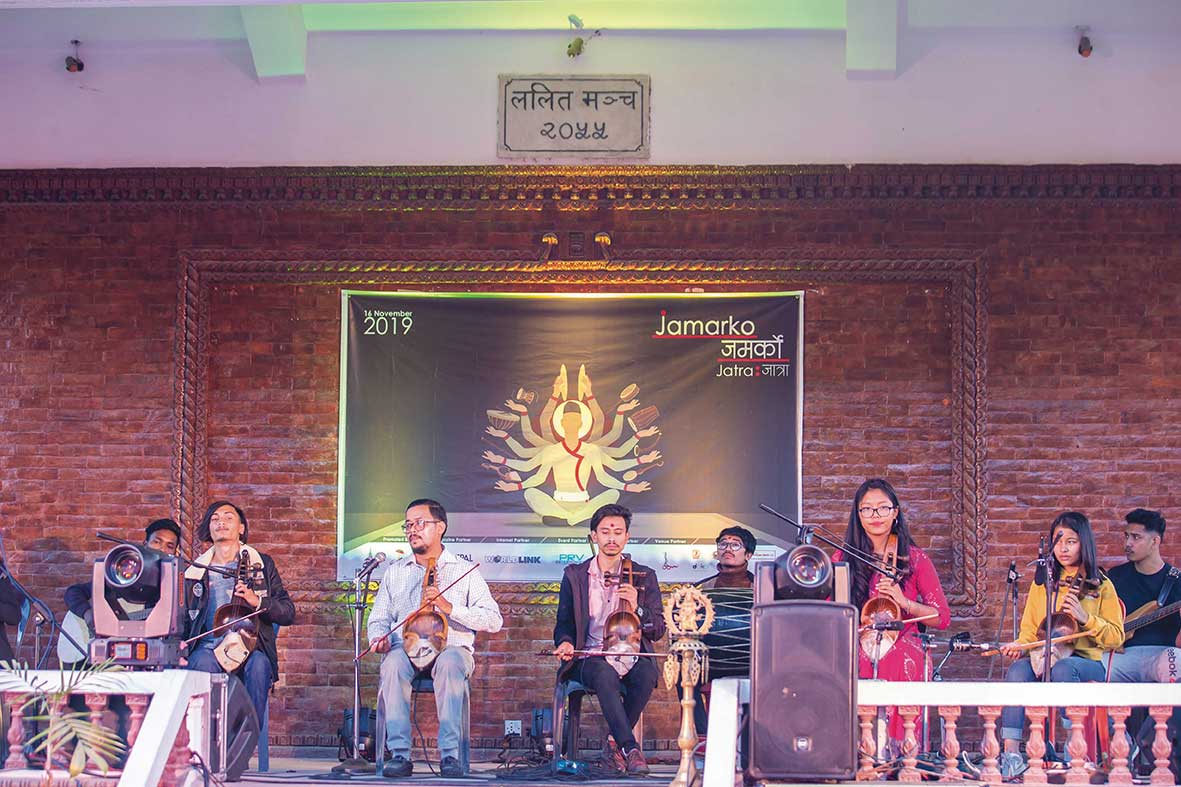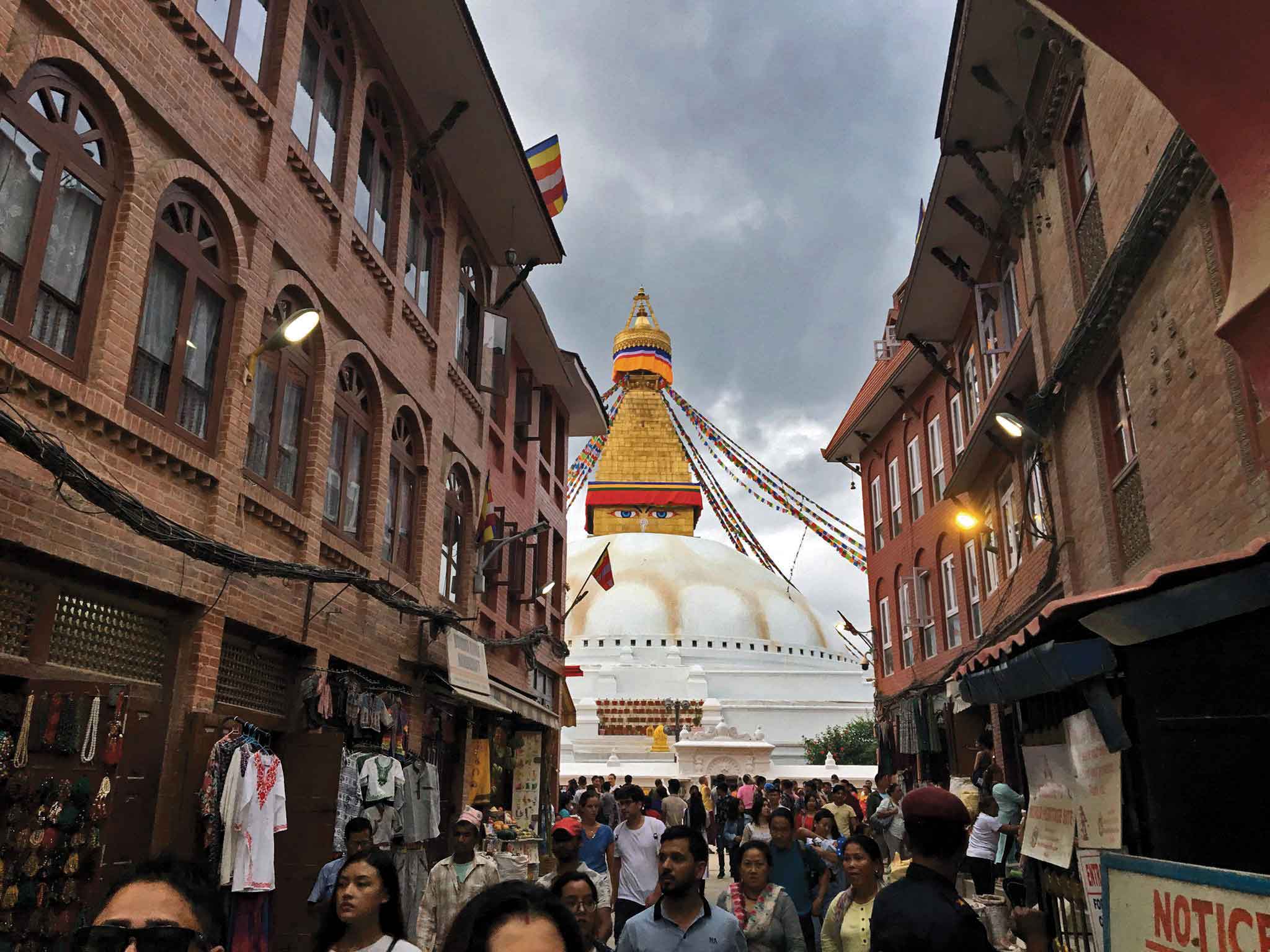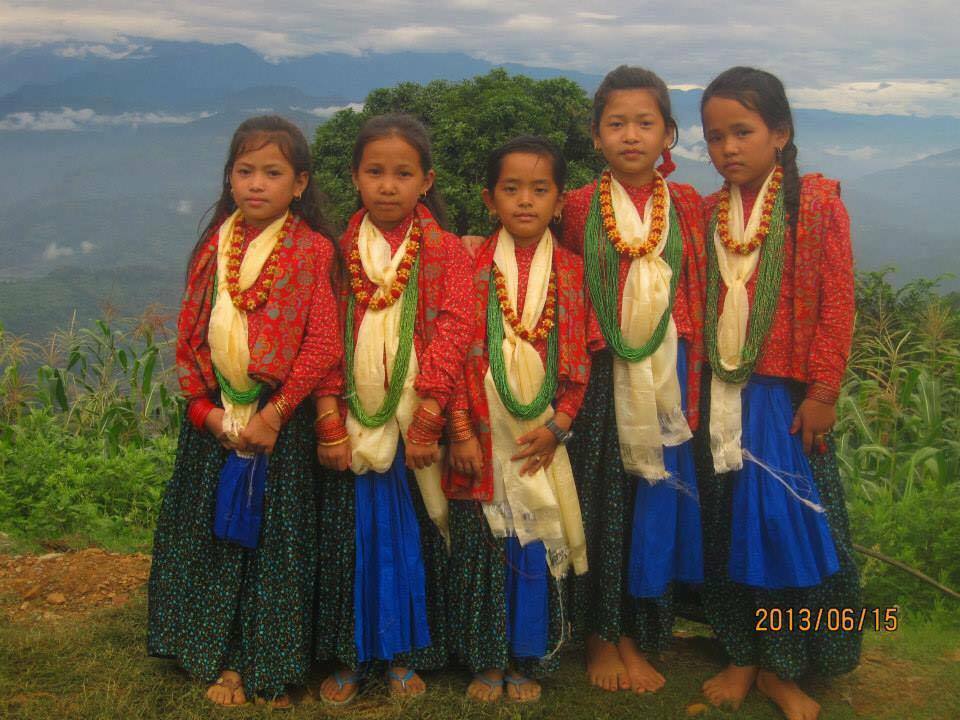
Dance till you Trance
The graceful swaying of nubile bodies; a long drawn song, hypnotic in its rendering. It’s a dance that mesmerizes both dancer and watcher alike.
I grew up hearing the stories of this famous Gurung dance form called “Ghatu naach” from my grandmother. As she was a “ghatusari” (a girl who performs this dance form), she used to tell me all about her experiences. “I was barely eleven when I joined the group of guru-ama (female teacher) of our village. We were two ghatusaris (including me), our guru-ama, and other caretakers in our team.” she reminisces. “We were really famous at that time! People from neighboring villages came to watch us dance.”
Back in the old days, Ghatu naach was a very important part of Gurung and Magar culture. Being raised in the city, I did not get to experience this part of our tradition first hand, but I got to know all about it through my grandmother. My grandmother belonged to a small village in Tanahun district, called Ratanpur. The ritual of Ghatu naach varies from place to place. According to my grandmother, there are two types of Ghatu dance—“Baramasey” (it is a dance that is performed throughout the year) and “Sati Ghatu”.
She was a part of Sati Ghatu naach. In our village, this graceful trance-like dance was performed on Baisakh Purnima for two days and three nights. During this period, the young ghatusaris and their guru-ama have to observe a fast. They are only allowed to drink water. Each ghatusari has her own susare (caretaker) who fixes their dress, hair, and special head gear worn for the dance, besides providing them with water and carrying them to the toilet. The ghatusaris dance with closed eyes, twisting and turning gracefully, and they dance in the squatting position as well. This slow dance form is accompanied by the singing of guru-ama.
This dance starts by first purifying the ground with cow dung. The ghatusaris are supposed to dance on the cow dung-slathered surface. Young ghatusaris are chosen from the village to perform the dance. Typically, a ghatusari must perform ghatu for at least three consecutive years. A ghatusari leaves the team if she gets married or gets her first menstrual cycle. “I danced for three years, and then I had to leave the group because I was getting married. I was fourteen at that time, younger than you!” says my grandmother.
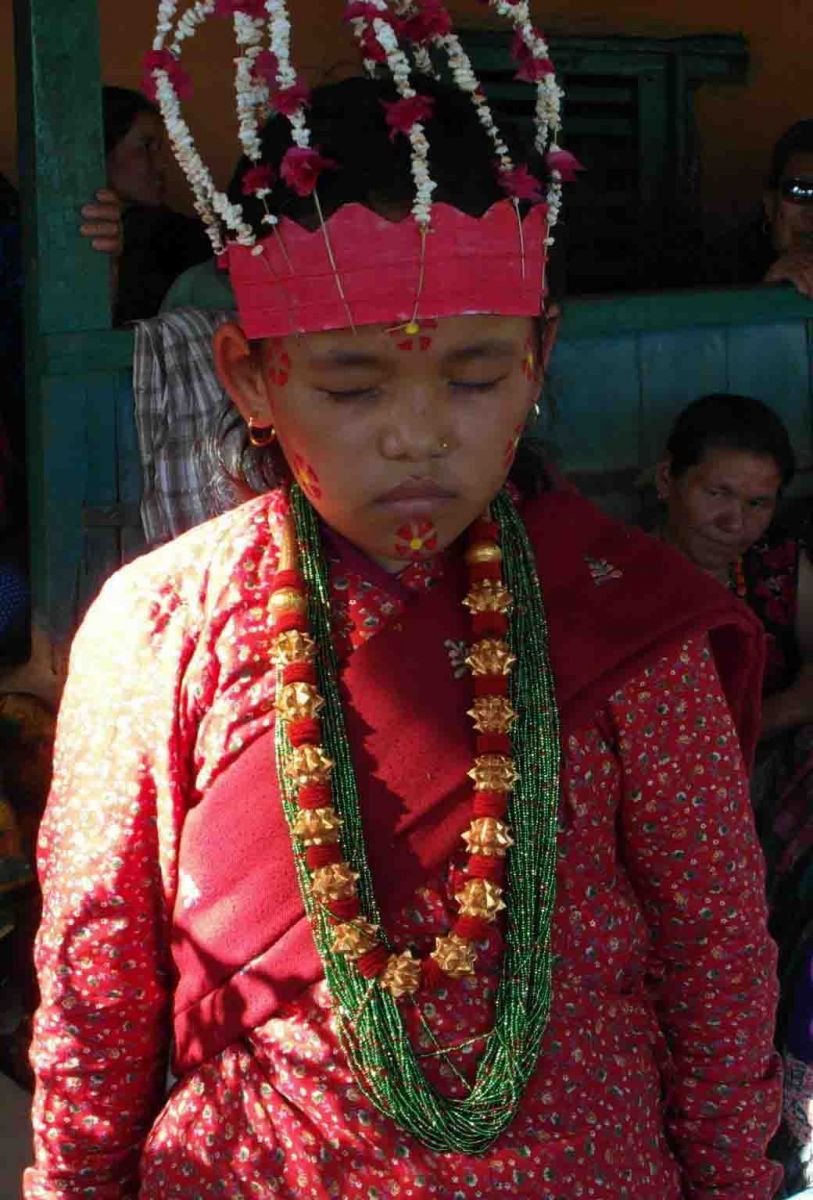 |
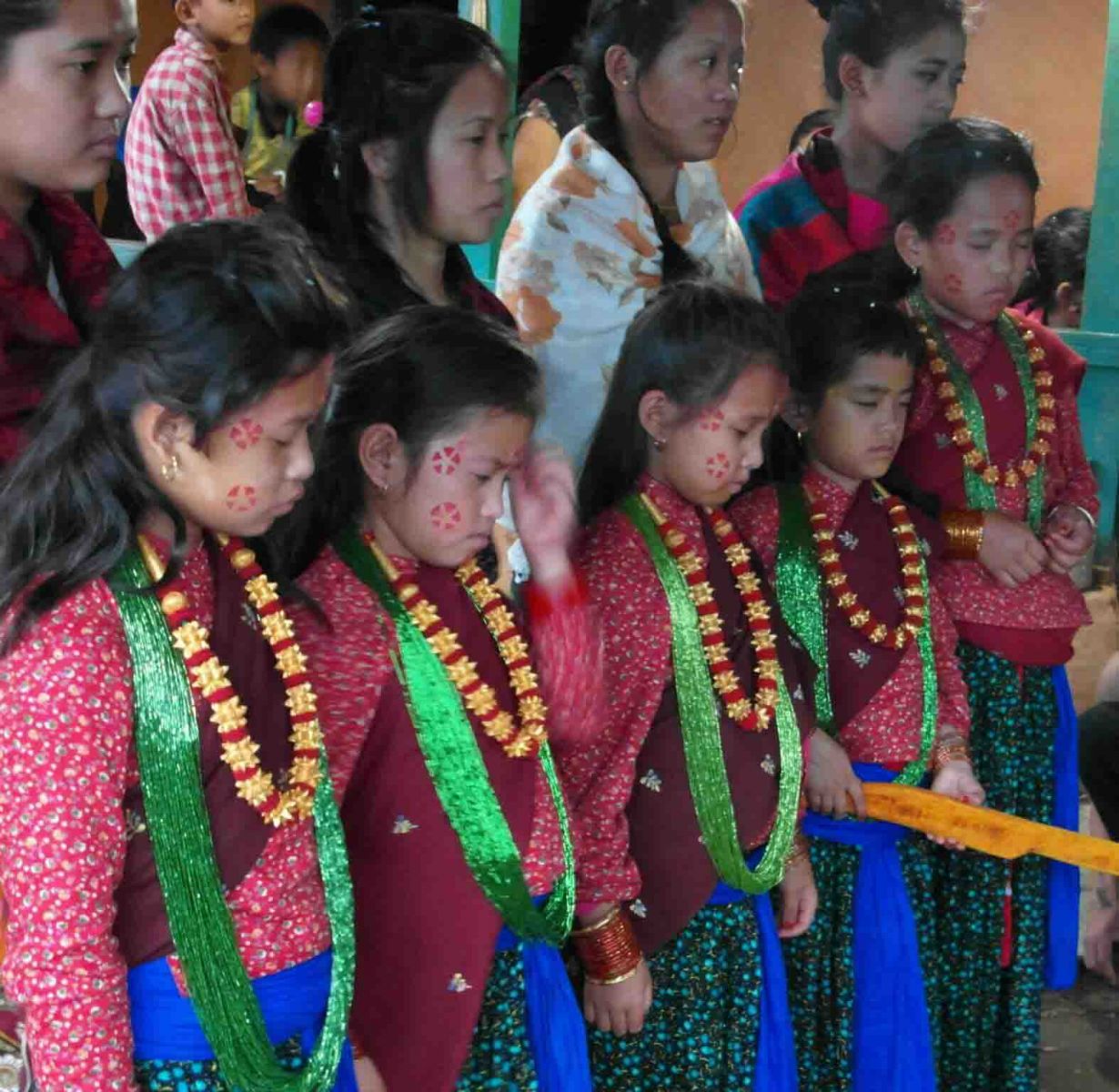 |
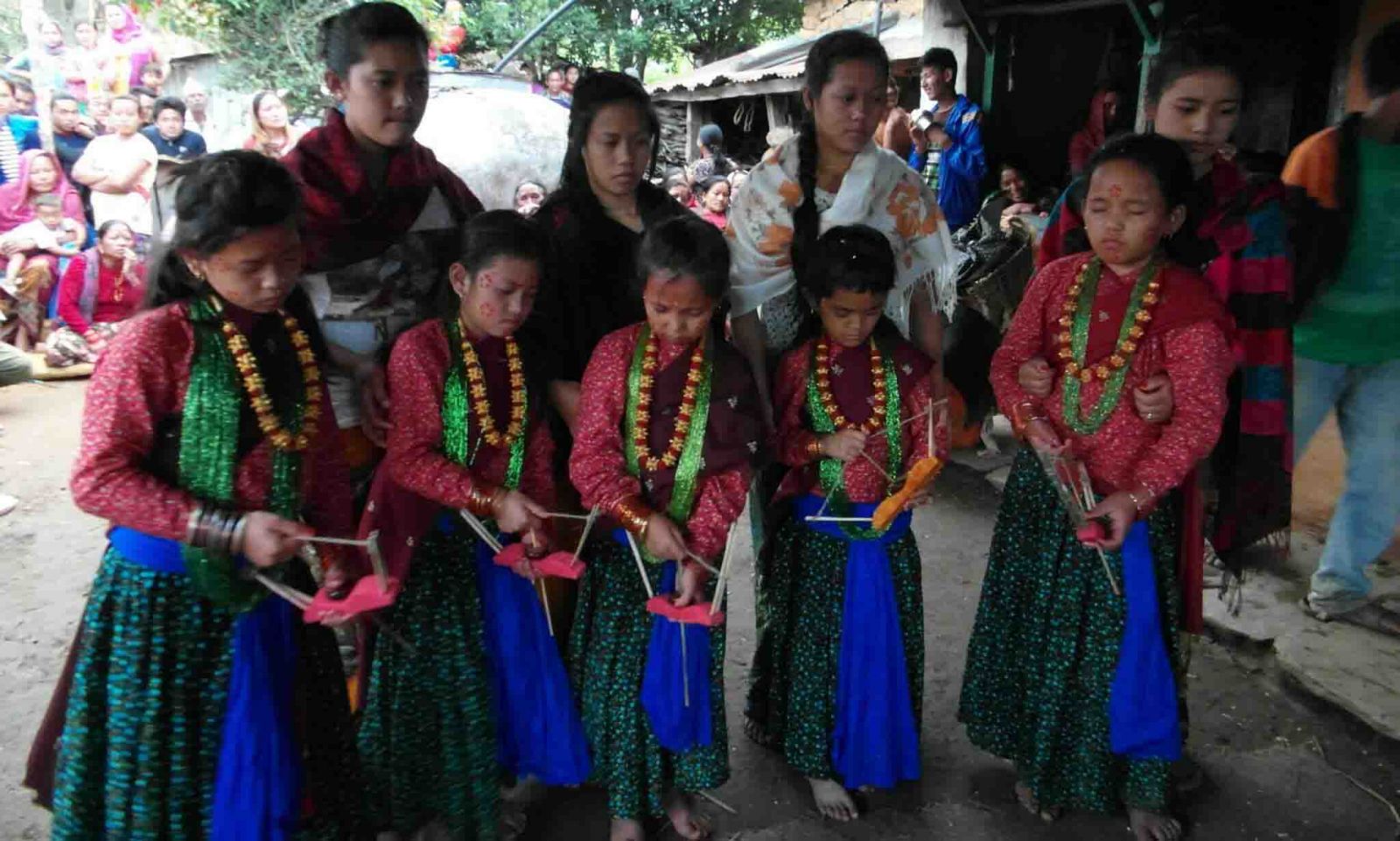 |
In the beginning of the song, deities are summoned and a puja is performed. The ghatusaris dance throughout the puja, unaffected by it. The song tells a long story of the legendary King Parsuram and his queen, various events in their lives including the death of the king and the immolation (sati) of his queen, and her subsequent return to life, hence the name “Sati Ghatu”. At specific points of the dance, the dancers fall into spirit possession. It is believed that if any ritual is omitted, or any mistake is made at that time, it may result in blindness, madness, or even death.
When asked about her favorite part of being a ghatusari, my grandmother gleefully explains about the varieties of jewelry and head gears they got to wear while dancing. “I was just a kid while being a ghatusari. The dresses and ornaments really fascinated me. Also, the respect you earn for being a ghatusari is huge. But I had to leave it all behind because of your grandfather!” she jokes.




